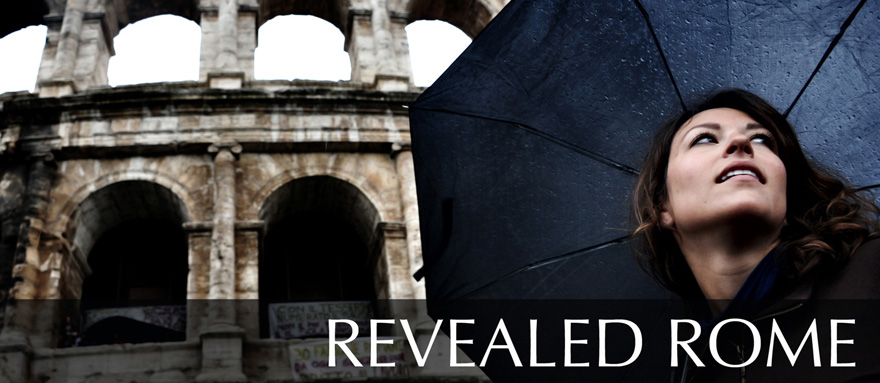 Forget losing 5 pounds or flossing. Well, you can do those too. But if you're already looking forward to taking a trip to Italy sometime in the New Year, there are some other resolutions to consider making.
Forget losing 5 pounds or flossing. Well, you can do those too. But if you're already looking forward to taking a trip to Italy sometime in the New Year, there are some other resolutions to consider making.
Three New Year's resolutions for before you go:
1. Get in good walking shape. I'm constantly surprised by the constant surprise of travelers who, coming to Rome, don't expect to walk very much. For those of us who only log steps from home to car, car to office, there's much more required of your feet — and heart — in Rome than home.
But that's not a bad thing. Walking is one of the best ways to see any Italian city; while you can take cabs, buses and metros, sometimes the only way to get a sense of the winding streets, or even to get to certain sites (hello, Forum and Palatine Hill), is on foot. So if the only thing between you and strolling for 8 hours straight is aerobic endurance, start changing it now. Your body — and wallet, and travel companions — will thank you.
2. Have a plan for the practicals. Make sure you have an idea of not just what you'll see where, but also how you'll do things like get from the airport to your hotel or avoid long lines for popular sites. Also make sure you know how you'll access money (hint: many places don't accept credit cards, your account can be shut down by your bank unless you tell them you're traveling abroad first, and withdrawing from an ATM is generally far more cost-effective than exchanging hard currency).
No, your trip won't be a complete disaster if you don't think some of the more practical issues through. But you might wind up spending way more money, and having more of a headache, than necessary.
3. Not let the hype get to you… too much. Yes, Italy is fantastic. But depending on when and where you're going, it can also be chaotic, hot, crowded, disorganized, unreliable, and expensive. (A lot of that can be avoided or mitigated with a bit of planning, but sometimes things just, well, happen).
It's unlikely that you'll be disappointed — but don't go into it imagining the picture-perfect scenes and stereotypes of a movie like Eat, Pray, Love, either. Will a lot of your trip replicate the magic of Julia Roberts' (er, Liz Gilbert's) experience? Probably. But as long as you don't expect perfection, the little misperfections won't "ruin" the whole shebang.
Three New Year's resolutions for once you're there:
1. Go off the beaten path. Especially if it's your first trip to Italy, you'll probably want to hit up the greats: Rome, Florence, Venice. But if you can, consider adding in a daytrip out to the countryside or to a smaller city — some of my favorites from Rome are Spoleto and Orvieto. It'll help you not only to get away from the crowds, but get a sense of what Italy means for the millions here who aren't city dwellers.
 The lovely Umbrian countryside.
The lovely Umbrian countryside.
Even if your time doesn't allow a daytrip, you can get "off the beaten path" within those cities, too. I'm talking lesser-known archaeological sites, museums beyond the Vatican, and myriad art-filled — and crowd-less — small churches. (And yes, there's just as much potential to get away from the crowds and see the non-headling gems in Florence and Venice).
2. Travel ethically. The impact of millions of visitors on Italy isn't benign — at its worst, it contributes to pollution, ruination of art and architecture, and weakened or overcommercialized local economies. Luckily, though, there are lots of ways you can help, from eating in-season foods to avoiding plastic water bottles. Click here for five more tips for how to travel ethically in Italy.
3. Get out from behind the camera. Okay, so maybe your neighbor, sister and Great Aunt Linda have all said they want you to take lots and lots of photos while you're in Italy because they want to see them all. But let's be serious. Nobody actually wants to see 38 photos in a row of the Trevi Fountain, even if some are of you with the Trevi Fountain, some are of you and your hubby with the Trevi Fountain, and some have a pretty clear view of the Trevi Fountain while others show the crowds, the mayhem and even that Bangladeshi guy who's trying to sell those ever-so-interesting flying spinning lit-up plastic discs.
And while you want to take photos so you can remember the Trevi Fountain, do you really need 38 to spark one memory… especially when you can just Google what the heck it looks like?
So: Unless photography's a big hobby, get out from behind the camera lens. Trying to enjoy your trip while also zooming in and out, playing with your different settings, forcing your subjects to smile until their faces freeze (and suffering their decreasing level of amenability), and sending silent death vibes to that random idiot who just will not get out of the frame — well, it's hard. And you know what? It doesn't help you remember the flavor of that killer pasta amatriciana or the feeling you had while standing in front of the Pieta for the first time all that much better.
Resolve to snap once, snap twice, snap three times (and please: keep your flash off in the Vatican's gallery of tapestries!)… and then put it away. Your travel companions will thank you. (Below, a true-to-life example of forcing the unwilling into photos).
 What, a forced smile? This smile?
What, a forced smile? This smile?






